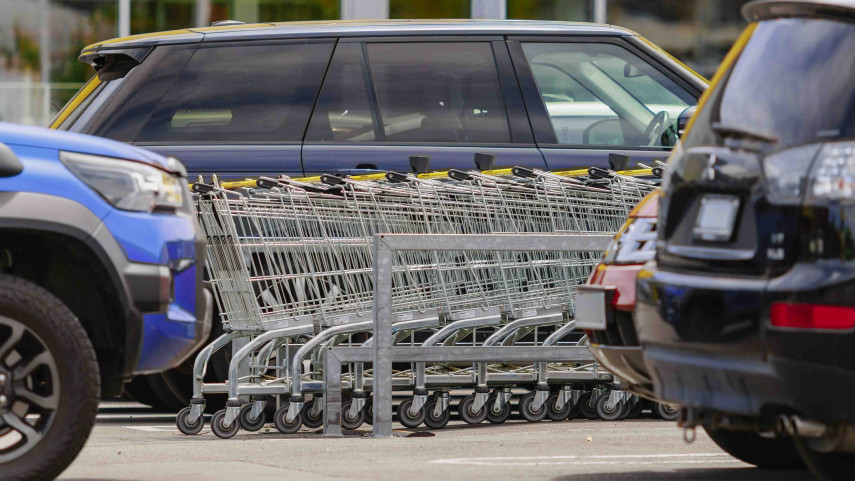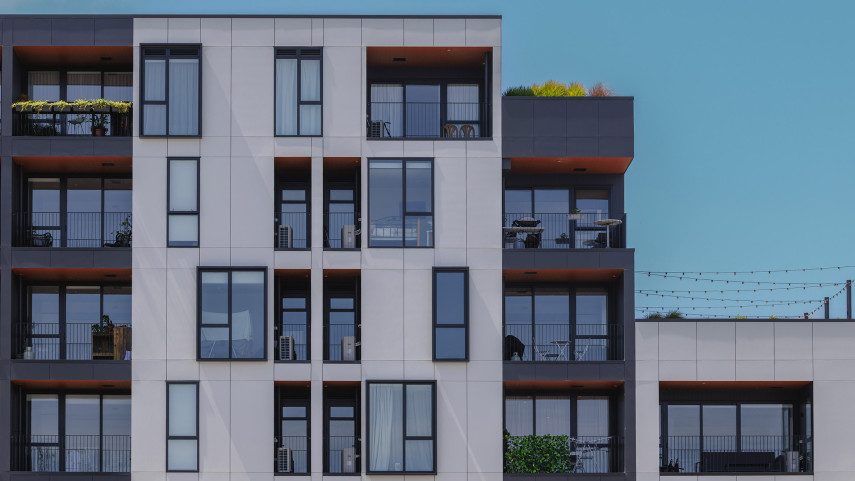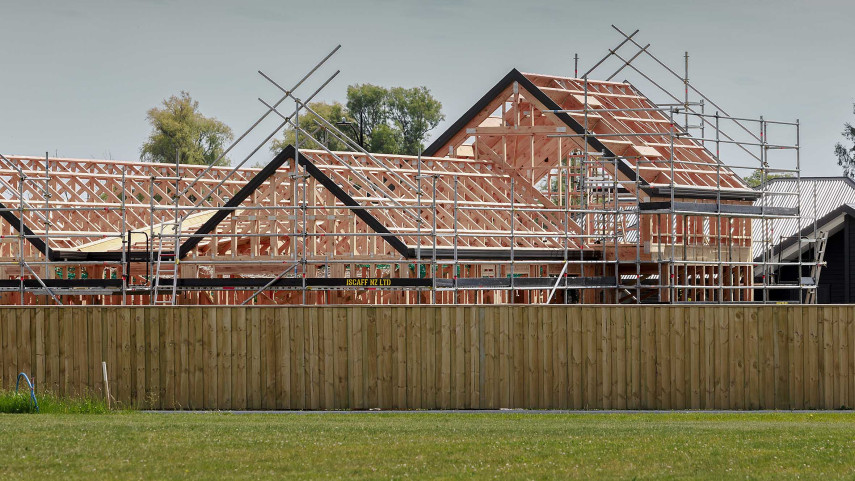Backflow is one of the biggest risks to our public water supply and can seriously affect the quality and safety of our drinking water.
Commercial properties
If you received a letter from us about backflow prevention at your commercial property, you may need to install a backflow prevention device, or let us know about an existing device. Find out what steps you need to take if you receive a letter from us.
Please complete our backflow prevention devices form(external link) to:
- Let us know which installation option you’ve chosen.
- To notify us of an existing device.
- To get in touch with us.
We’ll email you back within 10 working days, usually sooner.
Installing a backflow prevention device
Find out what you need to do if you're installing a backflow prevention device to meet building consent requirements.
How backflow can happen
Back-siphon
When the pressure drops in the public water supply and causes water to be sucked backwards from private property and into the public supply. Examples include large volumes of water being drawn for fire protection, during a water main or plumbing break, or during a shut-down of a water main or plumbing system for repair.
Back-pressure
When water pressure from a private property exceeds the public water supply's pressure, causing water to be pushed into the public supply. Examples include when a tank is installed at a higher level than the public water supply, or a pump system is pumping at a greater pressure than that of the public water supply.
A serious risk
Because homes and businesses use chemicals and other potential contaminants, backflow can be a major threat to people's health and well-being.
At its worst, backflow into the public drinking-water supply could cause death or serious injury, so we all have a responsibility to help reduce this risk.
Backflow prevention devices
Backflow prevention devices stop water flowing the wrong way. They're used to protect the public drinking-water supply and to protect people living or working inside buildings and properties.
If you received a letter from us about your commercial property
This section applies to you if your commercial property recently received a letter from us about backflow prevention and you’ve chosen to self-manage the installation of only a backflow prevention device at your property’s boundary (‘Option 1’ in the letter you received).
For any other situation, such as:
- you want to install a backflow prevention device as part of other building work
- you didn’t recently receive a letter from us about backflow prevention at your property
You need to apply for building consent in the normal way. Please refer to the section below titled ‘Building consent requirements’.
Fees
We’ve streamlined the building consent process if you’re only installing a backflow prevention device – a fixed fee of $600 (incl. GST).
Your streamlined building consent will be approved shortly after we receive a complete application, provided you’ve supplied all necessary information.
Please note that the fixed fee may not always cover all of the consent-related costs of an application (e.g. if the application does not contain all necessary information).
Process
1. Let us know
You need to let us know(external link) that you’ve chosen to self-manage the installation of your backflow prevention device (‘Option 1’ in the letter you received).
We’ll email you within two working days with the information and documents you need.
2. Apply for a building consent
Complete and submit an Application for a building consent for the installation of a backflow prevention device (Form B-009) [DOCX, 398 KB] or PDF [PDF, 64 KB].
3. Install your backflow prevention device
Once your consent is approved, a certifying plumber can go ahead and install your backflow prevention device on the private side of your property’s boundary.
After the device is installed, you may notice a small drop in water pressure. This is a sign that the device is working properly.
4. Apply for a code compliance certificate
After your backflow prevention device has been installed, you need to apply for a code compliance certificate. The cost of this is already included in the streamlined building consent application fee.
When you apply for a code compliance certificate, you also need to include the following information:
- A completed Construction statement – backflow prevention device - Form B-092 [DOCX, 72 KB]
- Photos from the certifying plumber
- Your device’s test report from an independent qualified person (IQP)(external link).
We’ll then issue you with a code compliance certificate, a compliance schedule (or an amended compliance schedule), and compliance schedule statement for your building.
5. Get your device tested annually
Your device needs to be tested annually (or after any repairs) by an IQP, as required by the compliance schedule, for you to be able to issue the annual building warrant of fitness.
Homes and businesses use substances and liquids that could be a major threat to the health and wellbeing of our customers and visitors. For that reason, backflow prevention is assessed and identified according to the risk to the health of consumers.
In Christchurch City Council's district, the backflow risk arising from the activities on a premises is assessed and it is mandatory that an appropriate backflow prevention device is installed at the point of water supply.
All commercial and industrial properties are to have a minimum of medium-hazard protection at the boundary to protect the main water supply. The installation of this device is a condition of supply and is the responsibility of the property owner.
For homeowners, the Council provides low-level protection at the point of connection to the public water supply. It does not protect water from hazards that can occur within the home.
Sometimes the level of protection provided at the water connection may not be enough, especially if activities such as spa baths, swimming pools or dialysis machines exist within the premises. Protection within the premise must be carried out to comply with clause G12 of the New Zealand Building Code.
| Hazard level | Definitions | Premises type | Protection required | What you can do |
|---|---|---|---|---|
| High | Potential to cause loss of life |
Commercial/industrial premises/zone (e.g. hairdressers, mortuaries, chemical manufacturing, dentists, dry cleaners, medical facilities) |
Reduced Pressure Zone Device |
Contact a plumber experienced in backflow prevention for advice and arrange an assessment and installation. A building consent is required before installation can occur. |
| Medium | Potential to cause illness |
Residential premises (e.g. swimming/spa pools, in-ground irrigation controllers, dialysis machine) |
Testable Dual Check Device |
Contact a plumber experienced in backflow prevention for advice and arrange for an assessment and installation. A building consent is required before installation can occur. |
| Low | Would cause a nuisance (by colour, odour or taste), but would not injure or endanger health |
Residential (e.g. fast-food drinks machines) |
Testable Dual Check Device installed in the meter at the property boundary |
The Council installs dual check devices at water supply connections to domestic premises. If you have areas within your premises that could cause risk to your drinking water, contact the Council or a plumber experienced in backflow prevention for advice. |
Note: Water will not be provided until the backflow prevention device is installed and a commissioning test has been carried out. The device must be certified by a suitably qualified person and a certificate must be sent to Christchurch City Council for code compliance.
New Zealand has strict legislation for the prevention of backflow to protect the safety of our drinking water. The installation of backflow prevention devices is mandatory and is required in accordance with:
- Water Services Act 2021 No 36 (as at 15 November 2021), Public Act Contents – New Zealand Legislation(external link)(external link)
- Christchurch City Council Water Supply and Wastewater Bylaw 2022(external link)(external link)
- New Zealand Building Code, clause G12(external link)(external link)
- District Plan Property Search (external link)(external link)
- Health (Drinking Water) Amendment Act 2007(external link)(external link)
- Drinking Water Standards for New Zealand (external link)(external link)
- Ministry of Health Water Safety Plan Guide Ref: D2.4: Distribution System – Backflow Preventionxternal link)(external link)
- AS/NZS 2845.1 Backflow Prevention Water Supply Material Design Performance(external link)(external link)
- AS/NZS 2845.3 Backflow Prevention Field Testing and Maintenance(external link)(external link)
Under current Local and Central Government legislation, backflow prevention is required to be installed by the property owner and must be installed immediately when requested.
All annual checking of the operation and maintenance of any backflow prevention device is to be carried out by the property owner.
In our agreement to supply water through a water connection from the reticulated supply in Christchurch, all water connections are to be fitted with metering devices and backflow protection.
How do I know if I need a backflow prevention device?
All commercial and industrial properties are required to have a backflow prevention device installed. If you recently received a letter from us asking you to install a backflow prevention device, then you need to complete this online form(external link) and have one installed as soon as possible.
I recently received a letter from you about backflow prevention. What process do I need to follow?
Please use this online form(external link) to:
- let us know which installation option you’ve chosen, or
- to notify us of an existing backflow prevention device, or
- to get in touch with us.
We’ll email you back within 10 working days, usually sooner.
If you’re self-managing the installation of your backflow prevention device (‘Option 1’ in the letter you received), please refer to the section above titled ‘If you recently received a letter from us’.
Do residential properties need backflow prevention?
Yes, if there are any 'high' or 'medium' backflow risk activities occurring on-site. This includes hairdressers, swimming pools, spa pools, and irrigation systems with underground controllers. A certifying plumber can advise about your specific property.
Why do I need to install backflow prevention?
Backflow can cause water (and potentially chemicals and other contaminants) to be sucked or pushed back into the public drinking-water supply, potentially causing serious illness, injury or death. As a commercial or industrial property owner, you are legally responsible for preventing backflow from your property and for making sure you don't contaminate the public drinking-water supply.
I already have a device installed – what should I do?
If you recently received a letter from us but already have a backflow prevention device installed, then you need to let us know what devices are located on your property and the level of risk they protect against. Please use this online form(external link) to let us know.
What’s the difference between boundary backflow prevention and ‘zone protection’?
Protecting the drinking water within your property’s boundaries (e.g. within a building) is known as ‘zone protection’. This is a separate matter to protecting the public drinking-water supply, which requires a backflow prevention device at your property’s boundary. A boundary device prevents water from your property’s water pipes from potentially back-flowing into the public pipes.
I own property but no building – do I still need a device?
If you don't intend to use water on your property, then you don't need to have a backflow prevention device installed. However, any use of water, even for irrigation, may mean you need a device. When applying for building consent to develop a property, backflow is considered as part of this application. If you don't need a water connection to your property, you can apply to have it removed.
I received a letter but my neighbour didn't – why?
It's possible they haven't yet received their letter from us, or their property wasn't deemed to be a risk to the public water supply network.
Can I choose not to install a device?
As a commercial or industrial property owner, you’re legally responsible for preventing backflow from your property and for making sure you don't contaminate the public drinking-water supply. If you don't meet these responsibilities, we may need to install a backflow prevention device at your cost.
If you recently received a letter from us about backflow prevention, please contact us using this online form(external link) or by phoning 03 941 8999.
For all other queries email backflowconsents@ccc.govt.nz.
Installing a device to meet building consent requirements
You need building consent from us before you can install a backflow prevention device. If you've already applied for building consent for other work, you can include your device in the same application.
To apply for building consent for a backflow prevention device, please complete the application form online, or if by post or in person, complete the application for building consent and/or Project Information Memorandum (Form 2) - Form B-002 [DOCX, 438 KB] (also available as a PDF [PDF, 369 KB]).
Include the backflow prevention device checksheet - Form B-052 [PDF, 40 KB] in your application.
Please refer to the Building Consents fees for more information.
Please note that the fixed fees and minimum application fees do not always cover all of the consent-related costs of an application (e.g. if the application does not contain all the required information).

A typical backflow prevention device for 'high risk' protection.
The property owner is responsible for the costs of installing, maintaining and testing any backflow prevention device. Costs for installation vary widely and depend on the:
- degree of protection required (risk level)
- size of the device
- complexity of the installation
A certifying plumber must install a backflow prevention device and all testing of the device must be carried out by an Independent Qualified Person (IQP)(external link)(external link).
A backflow prevention device is a specified system. Specified systems need to be included on a compliance schedule.
A backflow prevention device needs to be tested annually (or after any repairs) by an independent qualified person (IQP)(external link)(external link), as required by the compliance schedule, for you to be able to issue an annual warrant of fitness
A building warrant of fitness confirms that your specified system has been inspected and maintained as required. Please see (external link)our compliance schedule webpage(external link) for more information about specified systems, compliance schedules, and IQPs.
Related news

Christchurch named one-stop shop for supermarket consenting
Christchurch City Council has been selected to serve as the one-stop consenting authority for the country’s large scale supermarket developments.
26 Nov 2025
Christchurch withdraws from further housing intensification
Christchurch’s bid to opt out of further housing intensification has been accepted.
10 Nov 2025
New Council initiative to raise profile of eco buildings
Owners of energy-efficient buildings in Christchurch can now have that noted as a badge of honour on their property files.
27 Jun 2025